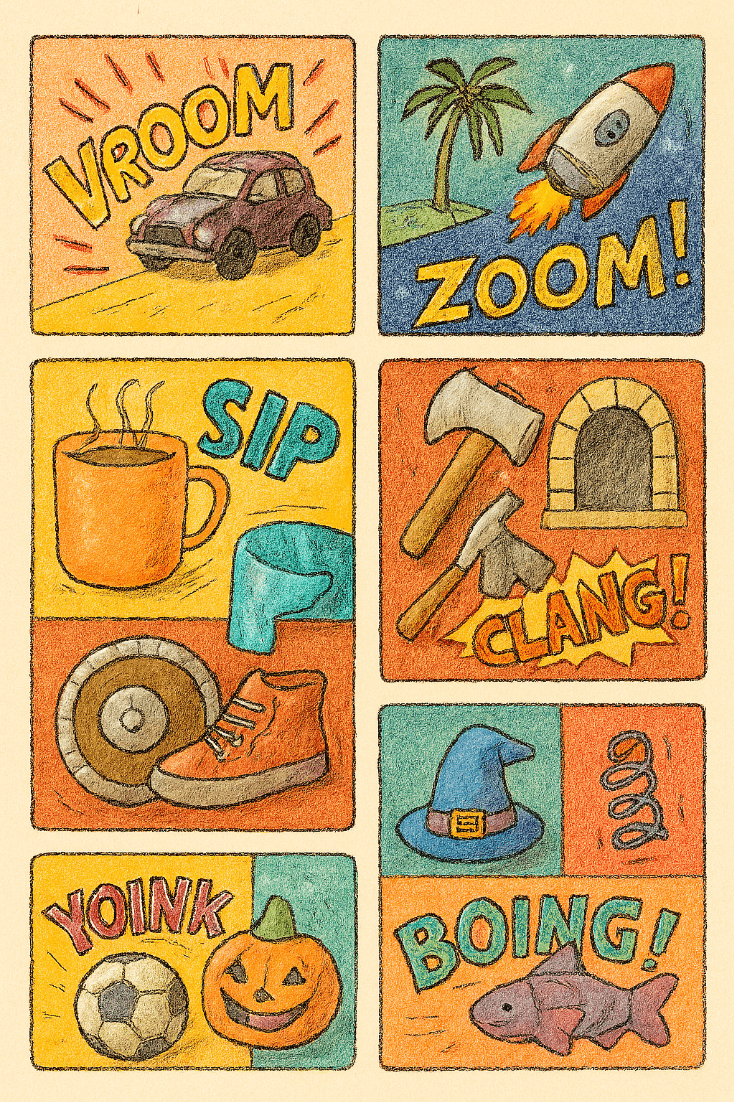CityScape is an interactive learning game designed for visually impaired children aged 4 to 6. The idea grew from a simple question: how can young children explore the complex environments of a city when they cannot rely on sight? The solution we developed combines tactile exploration with sound, giving children a playful and safe way to learn about spatial awareness, navigation, and urban elements.
My role in this project stretched across research, concept development, prototyping, user testing, and team collaboration. Over the course of the project, from initial ideation to the final prototype, I worked closely with my team to balance technical feasibility with a child-friendly design.

Background
CityScape was born out of a challenge: how can children with visual impairments learn about the urban environment around them in a safe, playful, and engaging way?
Traditional games and learning tools often rely heavily on visuals, leaving these children at a disadvantage. We wanted to design something that would let them explore the city through touch and sound, while also teaching spatial awareness and navigation skills.
Our users faced three key challenges:
Limited access to interactive learning tools that are inclusive.
A lack of safe, playful ways to learn about city elements (roads, crossings, buildings, transport).
Existing solutions focused more on education than fun and engagement.
Design Summary
CityScape is an interactive board game prototype that blends tactile exploration with audio feedback. Children navigate a miniature city by touch, and the game responds with sound cues that mimic real-world elements — like the beep of a crossing signal, the hum of traffic, or footsteps on a sidewalk.
The design focuses on making the experience immersive and intuitive, reducing learning barriers while keeping playfulness at the forefront. The prototype encourages kids to experiment, learn, and build confidence in navigating spaces.

Smarter Play
Tactile Board: Raised surfaces and textures represent roads, buildings, and pathways.
Audio Cues: Each urban element is paired with sound — bike bells, tram bells, and crossings beep and
Interactive Challenges: Kids can play guided missions like “find the park” or “cross the road safely.”

Features / Functionality
List of key product features or capabilities.
How these features support user goals or project objectives.

Research & Insights
To understand user needs, we spoke with parents, educators, and accessibility experts. A few insights stood out:
Children engage best with multi-sensory learning — combining touch and sound makes information stick.
Confidence-building is key: users need small wins to feel encouraged.
Most existing educational toys weren’t designed inclusively, making them frustrating or inaccessible.
This research guided every design decision, from material choices to audio design.
"Graphs, charts, photos of research sessions, or personas/empathy maps can make these insights more tangible."
Design & Exploration
Brainstorming and concept selection process.
Decisions on form factor, interaction style, or technical approach.
User personas and journey mapping (if applicable).
Feature prioritization and rationale.
"Include sketches, digital mockups, journey maps, or side-by-side concept comparisons to illustrate your design process."
Prototyping & Testing
We began with rough sketches, then built low-fidelity tactile boards out of foam and clay to quickly test with children. Later, we layered in Arduino-based sound triggers to bring the experience alive.
Testing sessions revealed how kids naturally approached the board. For example, some would trace roads with both hands simultaneously, prompting us to refine path widths. Parents emphasized the importance of durable materials since children explored with enthusiasm.
"Photos of physical prototypes, screenshots of digital prototypes, or diagrams showing the test setup (like Wizard of Oz simulations) would be great visuals here."
Challenges
One major challenge was balancing education vs. fun. If the game felt too much like schoolwork, kids lost interest quickly. We solved this by reframing tasks as playful missions rather than lessons.
Another hurdle was prototyping the audio system affordably. We hacked together a Wizard-of-Oz style test at first (using a facilitator triggering sounds), before moving toward a semi-automated system.
Impact
Early feedback was very encouraging:
Parents noted that children were more confident in talking about city spaces after playing.
Kids described the experience as “fun” rather than “learning,” which was a huge win.
Educators saw potential for scaling this into classrooms as an inclusive teaching tool.
Next Steps
Looking forward, CityScape could be expanded with:
Modular boards for different cities or environments.
Mobile app integration for tracking progress and unlocking new challenges.
More detailed soundscapes to deepen immersion.
Key Takeaways
This project taught me how powerful multi-sensory design can be in creating inclusive experiences. I learned the importance of iterative prototyping with real users, and how balancing fun with function is critical when designing for children.
CityScape remains one of the projects I’m proudest of because it blends creativity, empathy, and technical exploration into something that can make a real impact.




